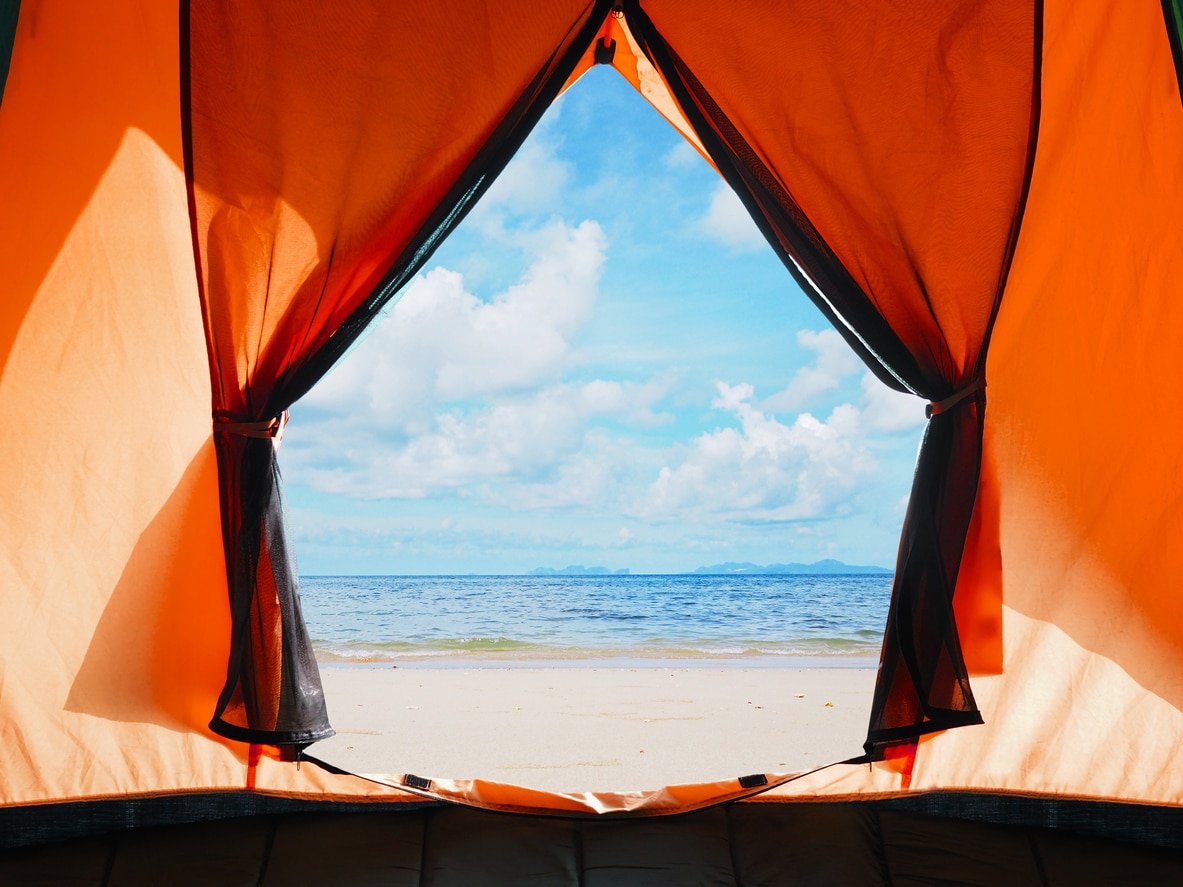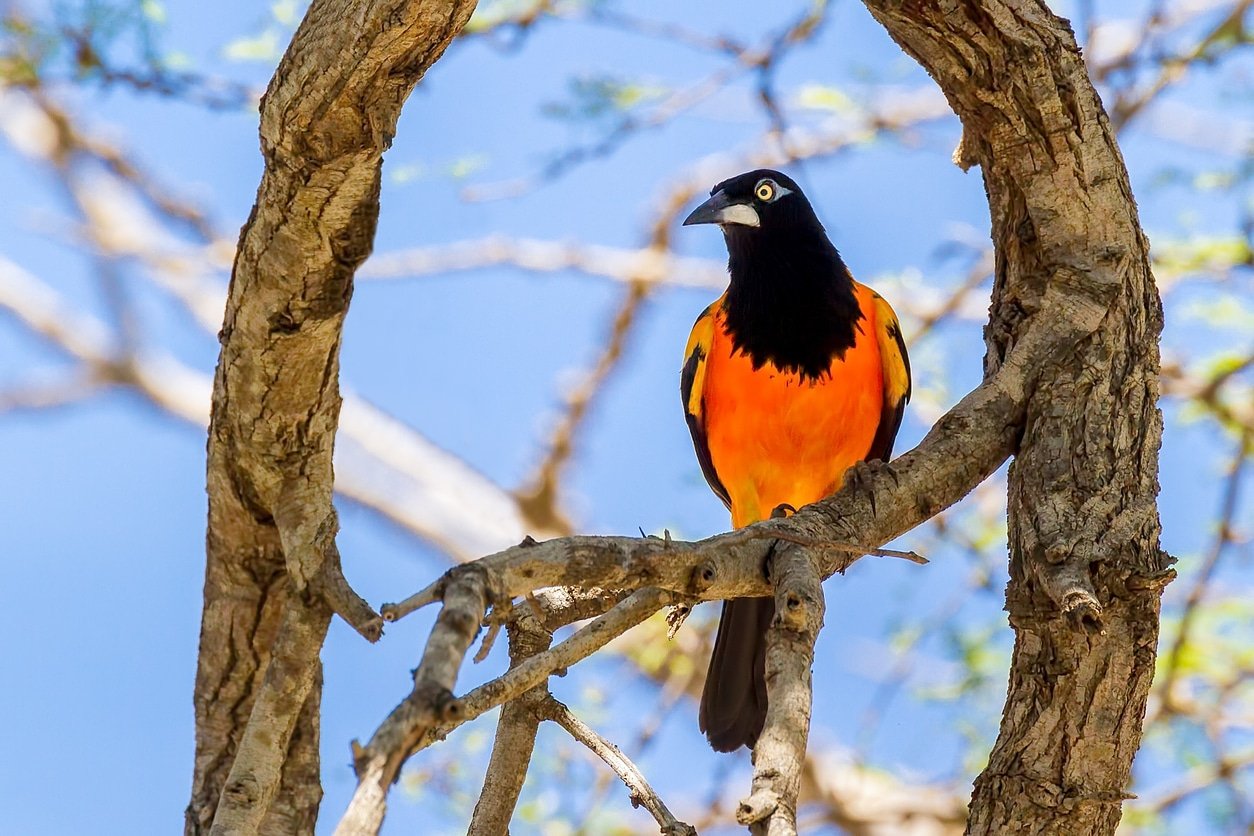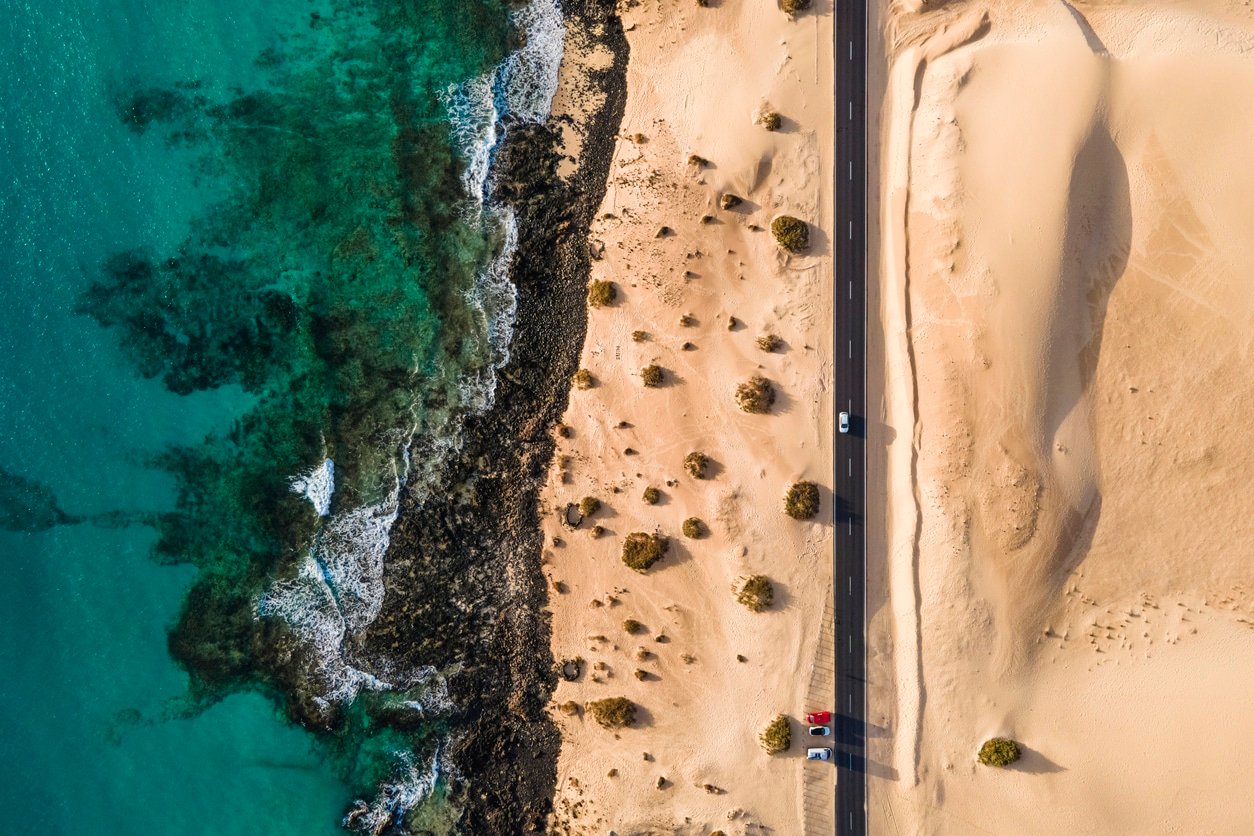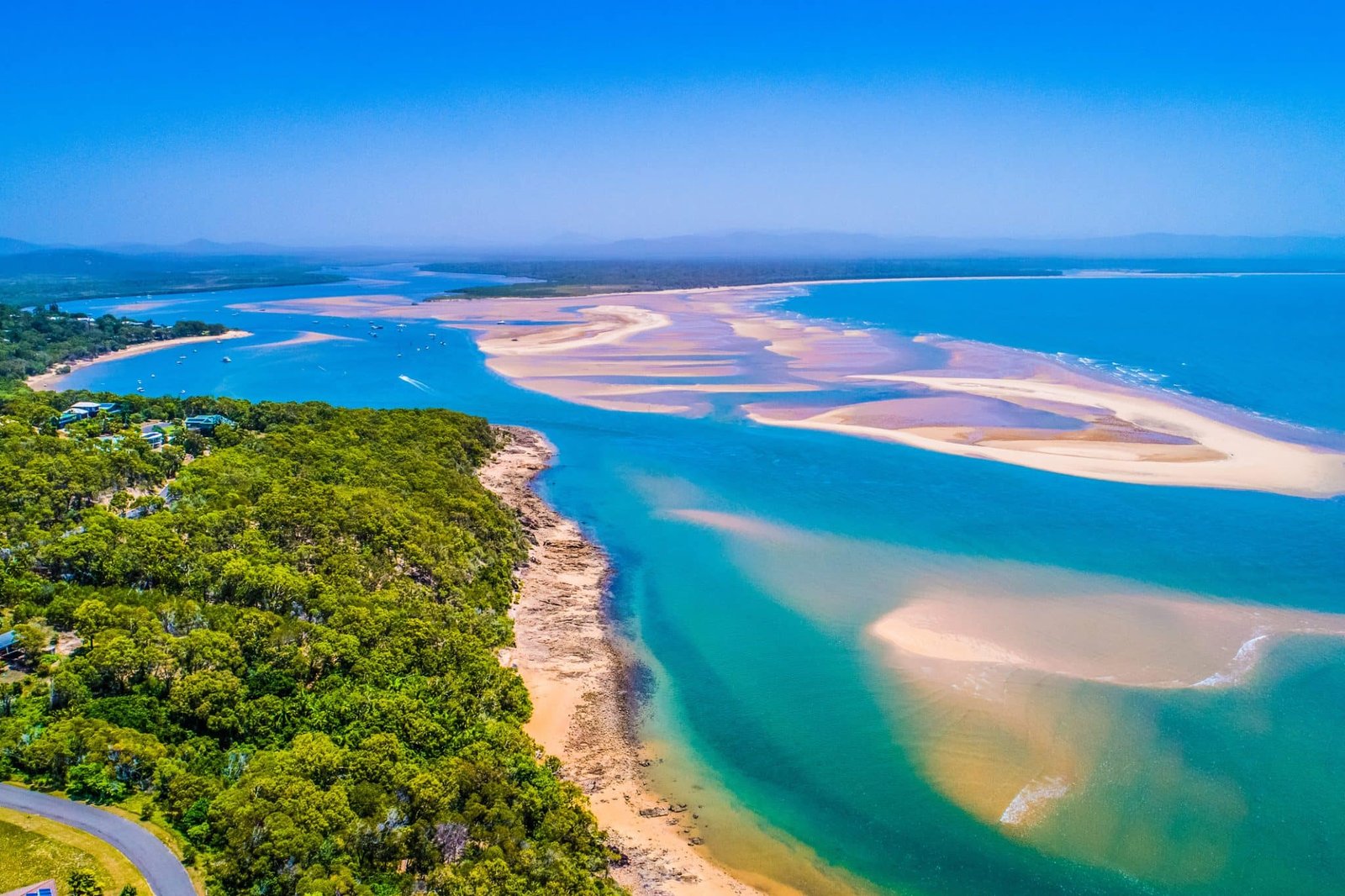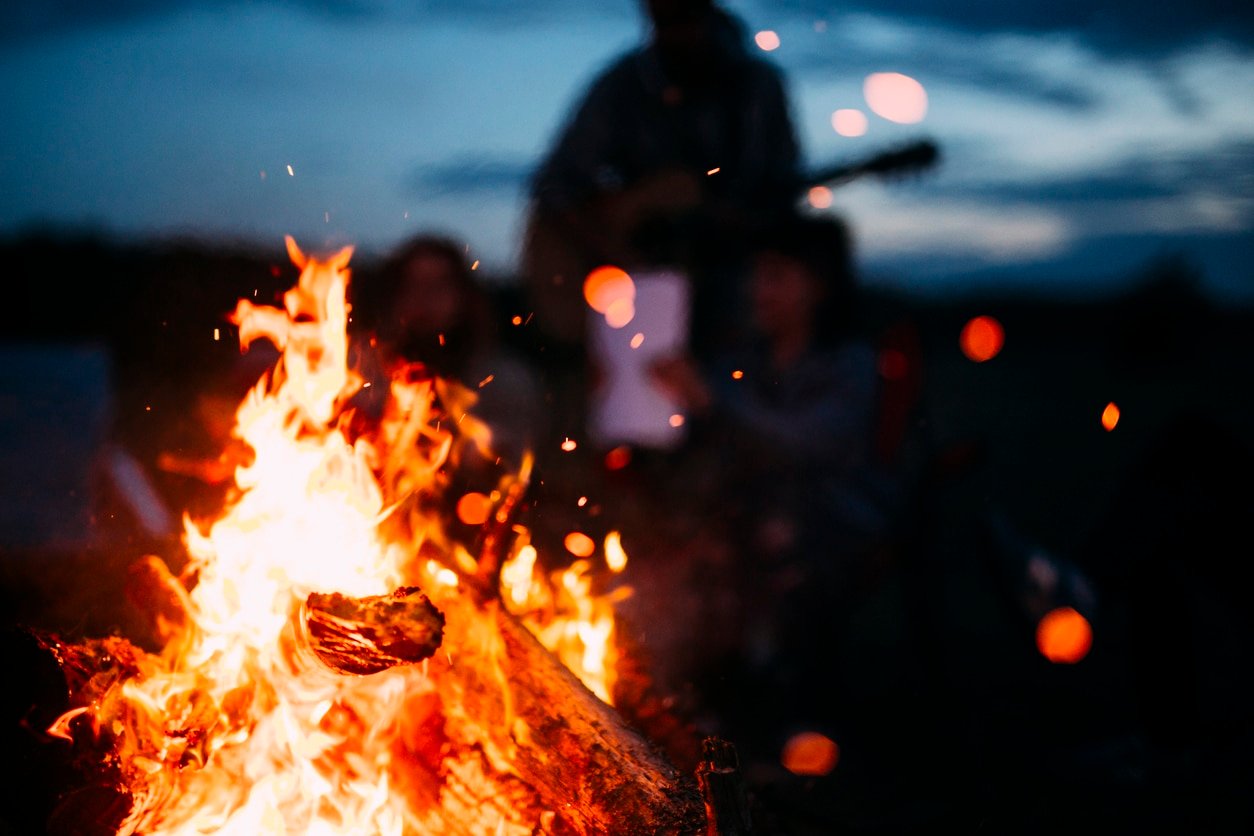The Ultimate Bribie Island Camping Guide: Campgrounds, Rules & More!
Bribie Island is amongst the three major Australian islands situated on Queensland’s eastern shoreline – the others being Moreton Island and North Stradbroke Island. With vibrant communities, sapphire-blue seas and an abundance of natural wonders, Bribie Island (or Yarun – its native name), is perfect for your next camping holiday.
And luckily there is no shortage of campgrounds to choose from!
Below we’ve put together the ultimate and best camping guide to the island. From showing you what the campgrounds have to offer, to explaining the rules for camping at Bribie island, the permits you need (and where to get them), as well as when and where to spot wildlife, this guide has everything you need in one place.
Let’s get started!
CONTENTS:
- Getting To Bribie Island
- The Best Campgrounds At Bribie Island
- The Rules Around Camping At Bribie Island
- Fun Things To Do When Camping On Bribie Island
- Places To Eat When Visiting The Island
- The Best Time To Camp: Weather, Wildlife & Events

The Basics: Getting To Bribie Island
If you’re coming from outside Australia to go camping at Bribie Island and have no gear, there are lots of camping stores in Australia to rent gear from such as Active Hire North. Or you can rent an RV at sites like Campers Are Us.
If you’re planning to get around by boat (some campsites are only accessed via boat), Bribie Island Boat and Water Hire will fulfil all your needs.
1. By Car
You must get a vehicle access permit to display before driving by car (or 4-wheel-drive – 4WD) on Bribie Island. Find at how to get one here.
There is a road bridge linking the mainland to the island, so it’s easy to take your vehicle over.
2. By Train
Plenty of trains stop close to Bribie Island. From Caboolture Station you can catch the train towards Woorim. Again, depending on where you’re travelling from in Australia, you may have to get multiple trains.
3. By Bus
Bus routes to Bribie Island include the 640, 641, 642, 643 and the 644. You’ll likely have to catch more than one bus if you’re far from the island, but Australia never disappoints with its frequent transport services!

The Best Campgrounds At Bribie Island & What They Offer
Bribie Island is ideal for campers, offering a range of campgrounds for every sort of person.
Bribie Island National Park and Recreation Area oversees all the Bribie Island campgrounds mentioned below.
You can book your spot for any of these campsites in advance on their website. Below are five of the best:
1. Ocean Beach Camping Area
Ocean Beach Camping Area is situated behind the sand dunes of Bribie Island’s Ocean Beach and offers stunning views of the coastline right outside your tent or RV.
Here you’ll find toilets, cold showers, wheelchair access, and opportunities to have campfires and barbecues. For history lovers, the remains of Fort Bribie, a World War II heritage site, is nearby where you can also find toilets and picnic tables with ocean views.
Just keep in mind that the beach is not patrolled here and there are dangerous rips.

2. Poverty Creek Camping Area
You can arrive at Poverty Creek Camping Area by boat, kayak, or canoe! Anchoring is allowed here, but if you don’t have a boat just arrive by car.
This site is on the coast and surrounded by nature, with camping spots situated under the shade of trees. As fishing is permitted, why not catch your dinner? And at a low tide, take a walk along the water’s edge.
Facilities include toilets, picnic tables, a barbecue, and wheelchair access. Campfires are permitted.

3. Mission Point Camping Area
Also on Bribie Island’s coastline is Mission Point Camping Area, but this camping area is only suitable for arriving by boat, with many of the same facilities as other sites including cold showers.
What makes this secluded site special are the stunning views of the Glass House Mountains, a peculiar yet remarkable set of natural structures on the mainland.
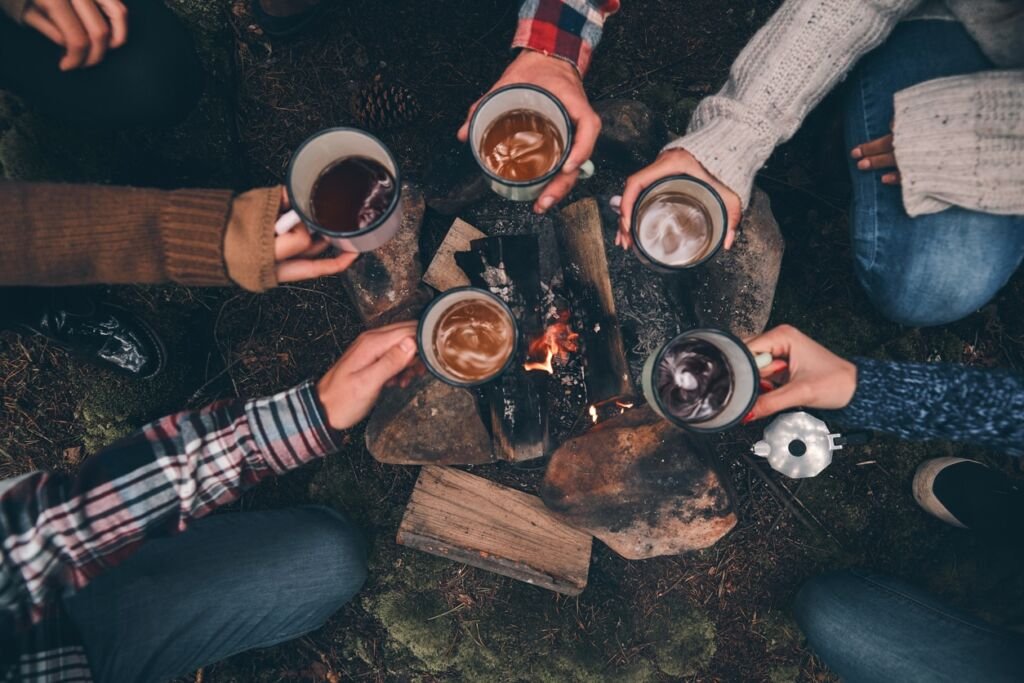
4. Lime Pocket Camping Area
Lime Pocket Camping Area is also only accessible by boat and features views of the Glass House Mountains as well. This site is ideal for those looking for a good place to canoe or kayak on their trip, and at night you will drift off to the sounds of the waves lapping the shore.
Just keep in mind that there are no toilets here, so bring your own portable toilet system. There is no running water here either.
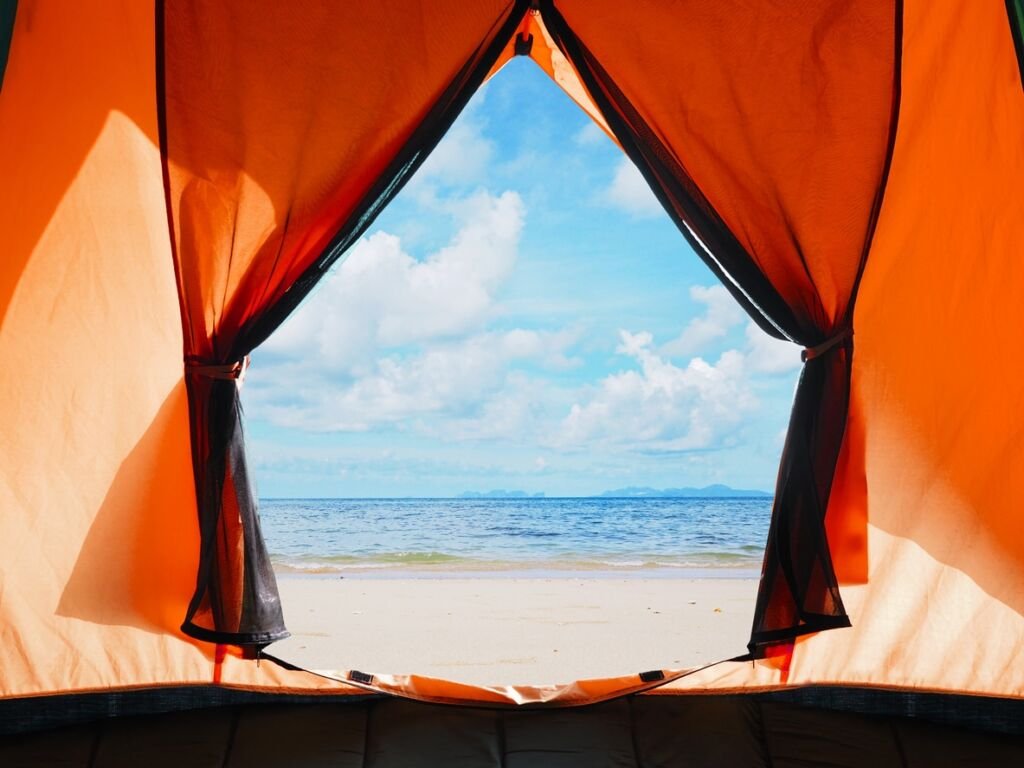
5. Gallagher Point Camping Area
Arrive by car or boat to the forested Gallagher Point Camping Area which also permits trailer camping. But there are limited sites so plan ahead! And there are no toilets here either, so bring portable ones (bush toileting is discouraged). There is also no water provided here.
In the summer at this Bribie Island campground, you can spot many migratory shorebirds passing by from China, Alaska, and Siberia in order to rest before returning home.
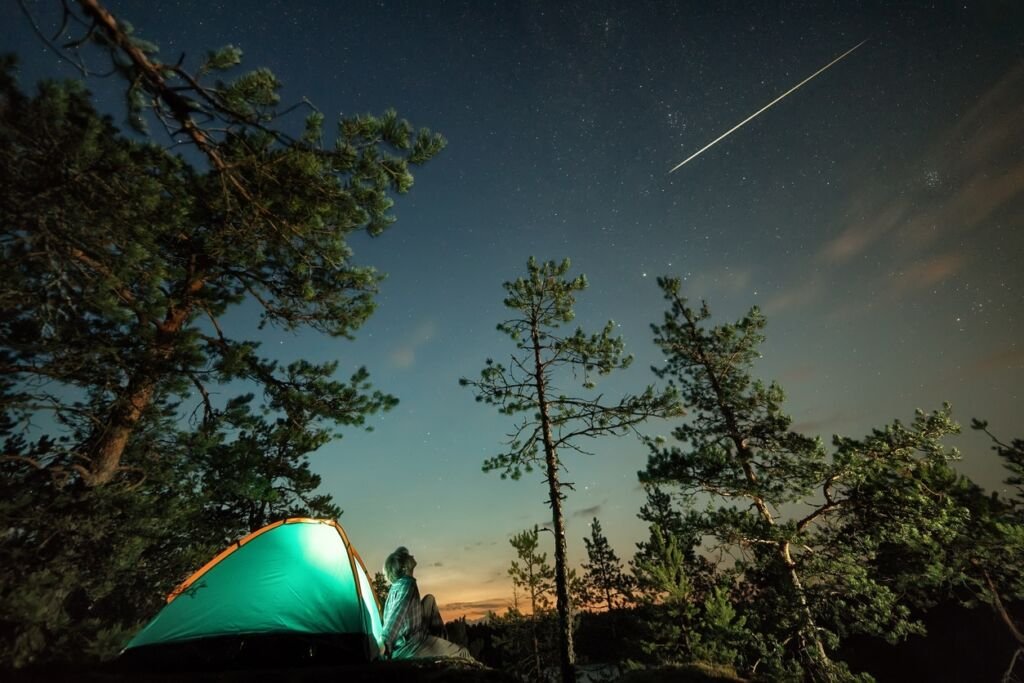
The Rules Around Camping At Bribie Island: Regulations & Advice
1. Using Your Car
As said earlier, you need a vehicle access permit to drive on Bribie Island. So, without one of these, you won’t be able to get to your campsite! And remember that only Gallagher Point, Poverty Creek, and Ocean Beach are accessible by 4WD.
Be careful on sandy surfaces and travel as close to low tide as possible. Don’t drive over sand dunes as there may be eggs laid on or under the surface that belong to birds or turtles.
2. Sites & Their Facilities
Fires are only permitted in fire rings provided and must be put out with water, not sand (bring your own firewood – it is illegal to take from the surrounding areas).
The water taps provide water for all needs except drinking, so bring bottled drinks. Portable toilet disposal systems can usually be found near the toilet. As mentioned, bush toileting is discouraged.
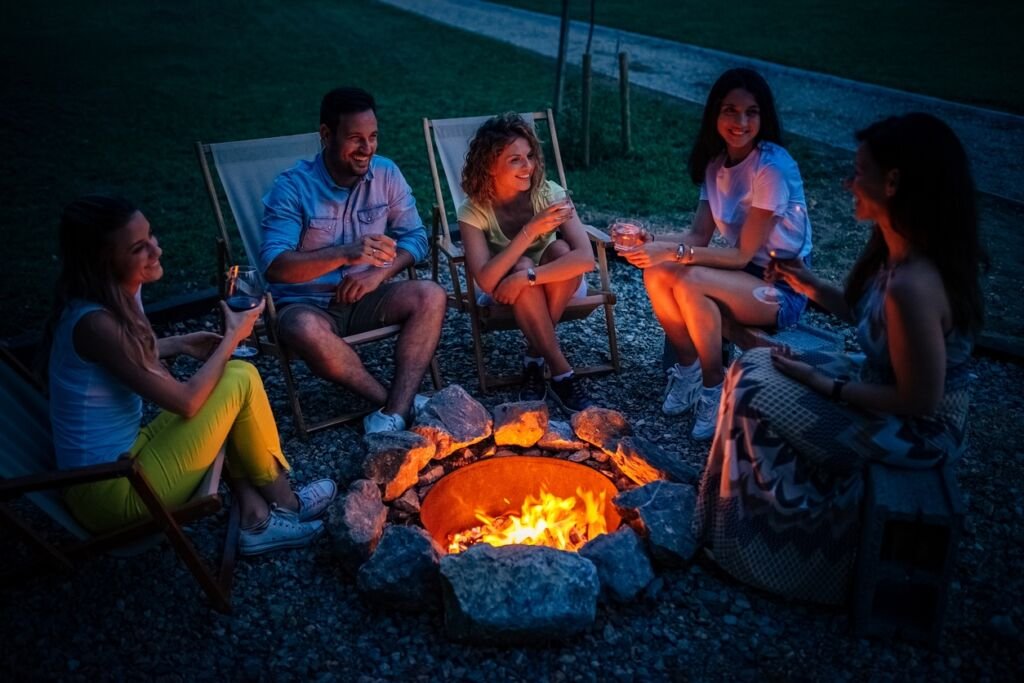
3. Booking Rules
You need to book your campsite before visiting, and fees apply. Display any relevant permits and passes on your windscreen as 24-hour surveillance is operational.
On the day you leave, ensure you do so by 11 am. When you first arrive, you can access your site at 2 pm – only camp in designated sites!
4. Fishing
You can fish pretty much anywhere on Bribie Island, apart from some restricted sections of the Pumicestone Passage which are visible on this map. Rules differ around Moreton Bay, with some sections allowing fishing lines, and some prohibiting trawling or netting.
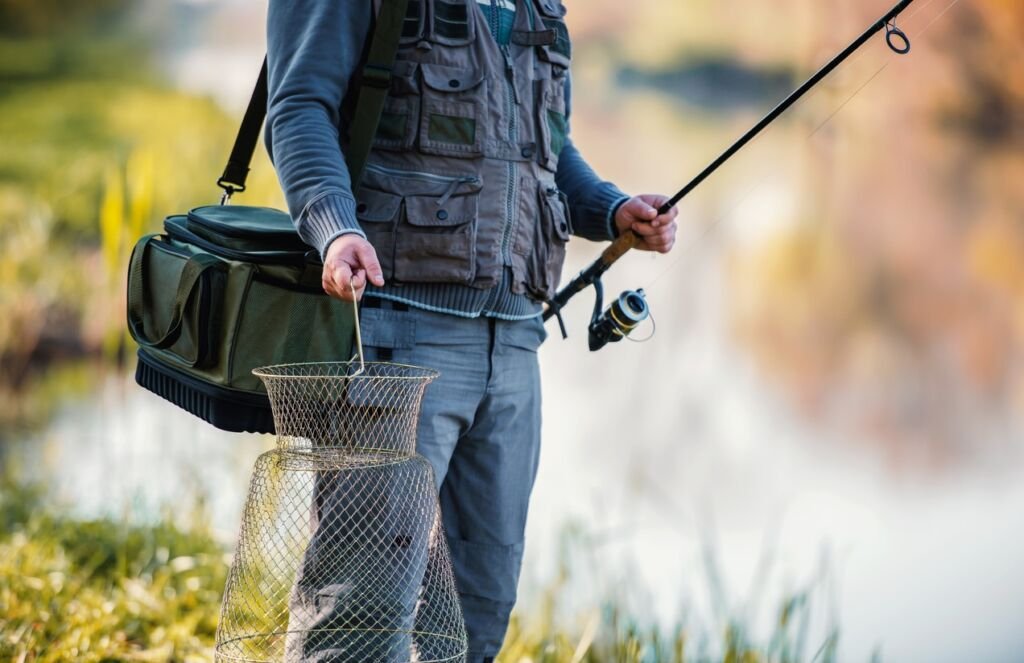
5. Looking After Yourself & The Island
It is suggested to always stay at least 5 meters away from vegetation. Also, domestic animals are not allowed on the island’s campsites. Of course, do not litter – take any litter with you to throw away.
Generators are strictly not permitted, and fuel stoves are preferable to fires. Do not start fires on the beach.
When wading or swimming at the Pumicestone Passage, wear shoes, as Estuarine Stonefish can inflict a painful sting if touched. And in Moreton Bay, watch out for Lyngbya – a toxic, bluish alga that appears from late spring to mid-autumn, and inflicts irritation to the skin and even the respiratory system.
Don’t use soaps or shampoos in any natural waterways, and when boating, go slowly over seagrass beds as dugongs feed here. A dugong is a kind of cross between a seal and a dolphin – it’s commonly referred to as a sea cow.
6. Things To Bring
- Water, water, water! (Or a filter). Remember that you can’t drink from the taps.
- A fuel stove and/or milled timber.
- Sunscreen, a hat, and sunglasses to keep the sun off.
- Insect repellent for those pesky mosquitos.
- A portable toilet for sites without them.
- Tarpaulins for the protection of your tent from flying fox droppings – flying foxes are basically a type of bat.
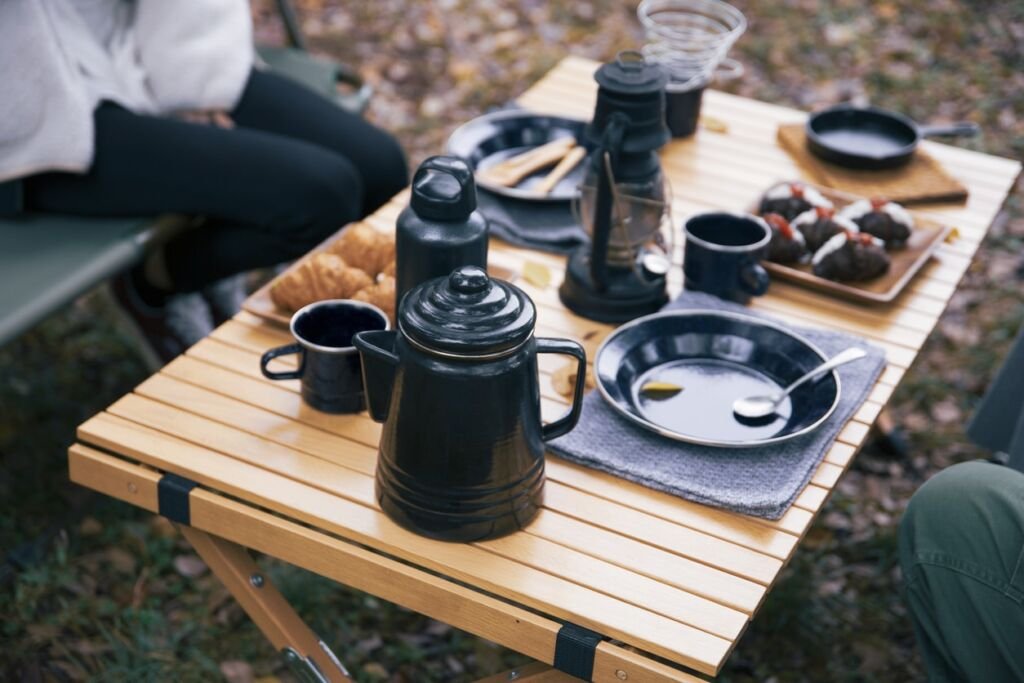
Eight Fun Things To Do When Camping On Bribie Island
Catch a bus, drive or hike and explore Bribie Island’s many attractions during your stay.
1. Bribie Island National Park and Recreation Area
Did you know Bribie Island National Park and Recreation Area refers to around a third of the whole island? It is not only host to amazing campsites, but also offers beautiful hikes with fishing and birdwatching opportunities. Each of their campsites has day-use areas for you to visit, such as the Lions Park day-use area and Poverty Creek day-use area.
Lighthouse Reach day-use area can be reached by car or boat and offers open grassy areas for your BBQ or picnic, as well as gorgeous walks along the shore. But in particular, look out for the lighthouse site beyond the sand hill, where a lighthouse once stood for 56 years. And of course, here you can fish and kayak too.

2. Pumicestone Passage
Spread over 35 kilometers is the Pumicestone Passage, a waterway belonging to Moreton Bay Marine Park but still visible from Bribie Island. Here you can spot plenty of birdlife, marine life and meandering channels, islands, and sandbanks.
Animals to watch out for include dugongs, dolphins, turtles and around 30 species of bird. You can fish in some areas of the Pumicestone Passage.
3. Welsby Lagoon
Trek to Welsby Lagoon where you will be treated to not only the sparkling coast nearby, but also to a deep blue lagoon calm enough to swim in. Don’t jump straight in though, it can be cold!

4. Woorim Ocean Beach
Woorim Ocean Beach has everything you need for a day out, with opportunities to surf, paddleboard, swim, fish and sunbathe. Just watch out for tidal currents by not straying too far out if you aren’t a confident swimmer. At most times there are lifeguards in case you get into any trouble.
Woorim Ocean Beach also has a campsite behind the sand dunes only accessible by car, like Ocean Beach Camping Area.
5. Banksia Beach (Town)
You’ll find Banksia Beach in the Moreton Bay Region, and the name refers to the suburb located here (which is on the coast). The town is packed with places to eat (like the Bribie Island Bakehouse) and parks for children, as well as the Col Fisher Park which provides a nice walk.
You can also visit the Bird Sanctuary – a national reserve – and Kakadu Beach, a serene nature reserve with beautiful sunsets and great hikes.
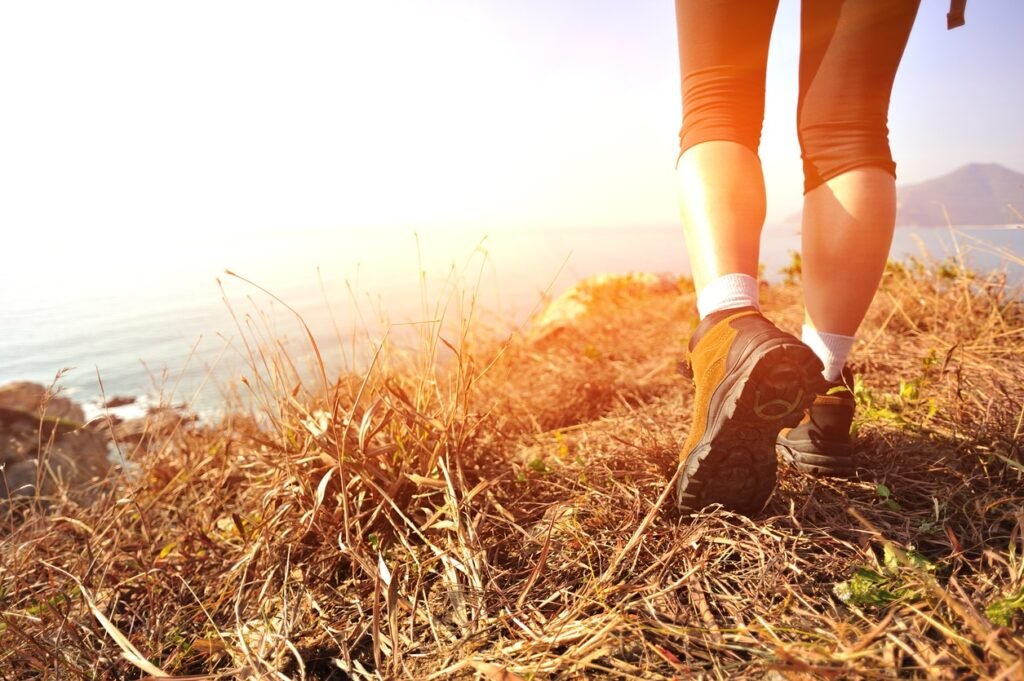
6. Bribie Island Seaside Museum
Overlooking the Pumicestone Passage is the Bribie Island Seaside Museum, which exhibits the vibrant history of Bribie Island.
You’ll hear stories from First Nations elders in a video archive, watch films about the famous S.S. Koopa, see preserved fish from Moreton Bay dating back to 1905, hear stories of Bribie Island’s role in World War I, and hear the story of artist Ian Fairweather. You will also see various interactive displays, making it a great visit for families. Entry is free.
7. Edwin Schrag Lookout
At the southern end of the Woorim foreshore is this large park with multiple beach access points. Here you will find picnic tables with views of the neighboring Moreton Island – it’s a great place to eat lunch!
8. Bribie Island Butterfly House
Bribie Island Butterfly House will fascinate adults and children alike with its array of butterflies and plants. Entry starts at $7.
Mornings tend to be busy so keep this in mind when planning your trip, and it’s only open on Wednesdays and Sundays from 10 pm to 4 pm. But all profits go to helping those in need – so it’s worth a visit!

Places To Eat When Visiting The Island
When you finally make it to Bribie Island, you’ll probably want to familiarize yourself with the best places to eat if you decide to venture out of your campsite. Here are just a few of them.
1. The Deck Bistro
Bribie Island’s Pacific Harbour and Country Club is home to The Deck Bistro, open to the public. Here you can dine alfresco or in the comfort of an air-conditioned dining room. Visit simply for a bite to eat or a meal.
Starters and sides include halloumi chips and calamari, and mains range from stir fries to gnocchi. You can also get seafood, burgers, and pizza. Share platters are good for groups, starting at $30.
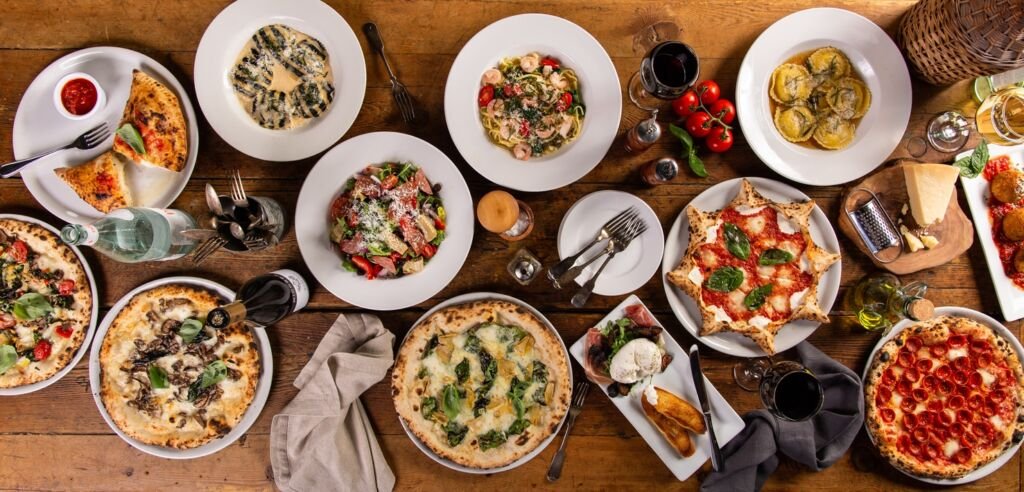
2. Charlie’s Bistro
At Bribie Island Hotel you’ll find Charlie’s Bistro which serves a wide range of dishes with veggie and vegan options.
There is also a kids’ menu with dishes for around $10, and desserts for about $2.00, including Frog in a Pond – a Freddo chocolate bar in jelly! Takeaway is available here too and seniors get significant discounts.
3. Bribie Beach Bar
On the southern coast of Bribie Island is the lively Bribie Beach Bar, with live music, generously topped pizzas, and gluten-free options. There is an outdoor area around the back, but inside you’ll find it intimate and comfortable.
4. Sushi Lovers
At Sushi Lovers, you will find affordable sushi as well as noodles, bento boxes and desserts – great for mixing up your camping diet. Drinks include green tea and mango juice.
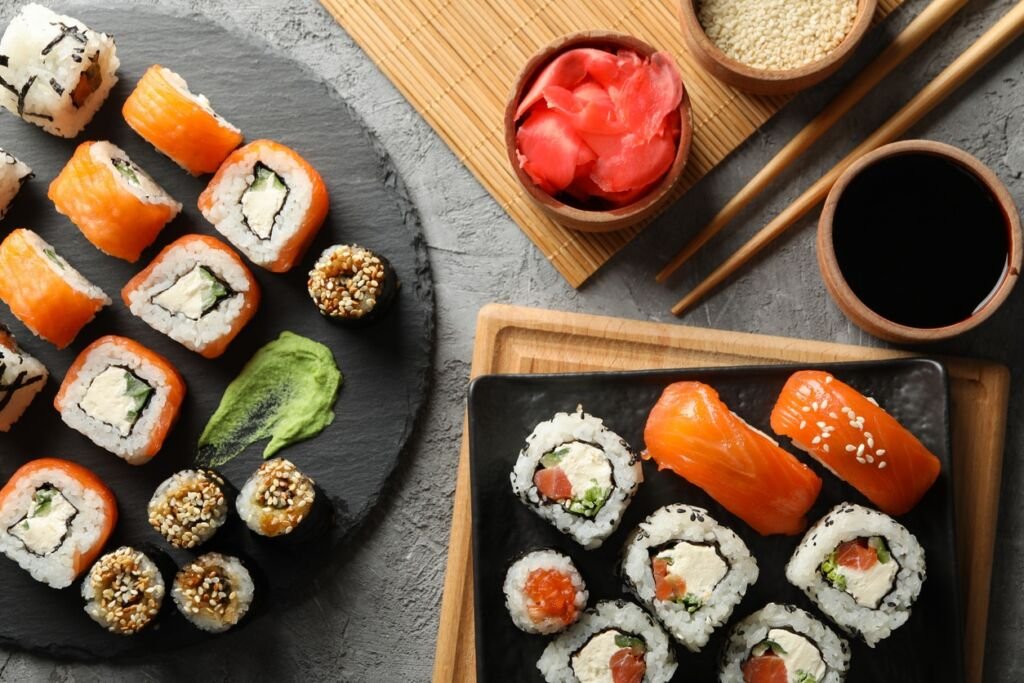
5. Sue’s Café and Takeaway
Sue’s Café and Takeaway sells homemade fast food, including massive burgers, perfect for both lunch and dinner.
6. La Vera Gourmet Pizza and Bar
You’ll find Italian food at La Vera Gourmet, with prices ranging from $5 to $15. Dishes include all kinds of pasta, lasagnas, pizzas, salads, and desserts like tiramisu and strawberry cakes.
7. Seasars Seafood Café and Bistro
For some fresh grub try Seasars Seafood Café and Bistro which sells seafood straight from the ocean, with seating located on the water. It’s situated by the road leading to the island.
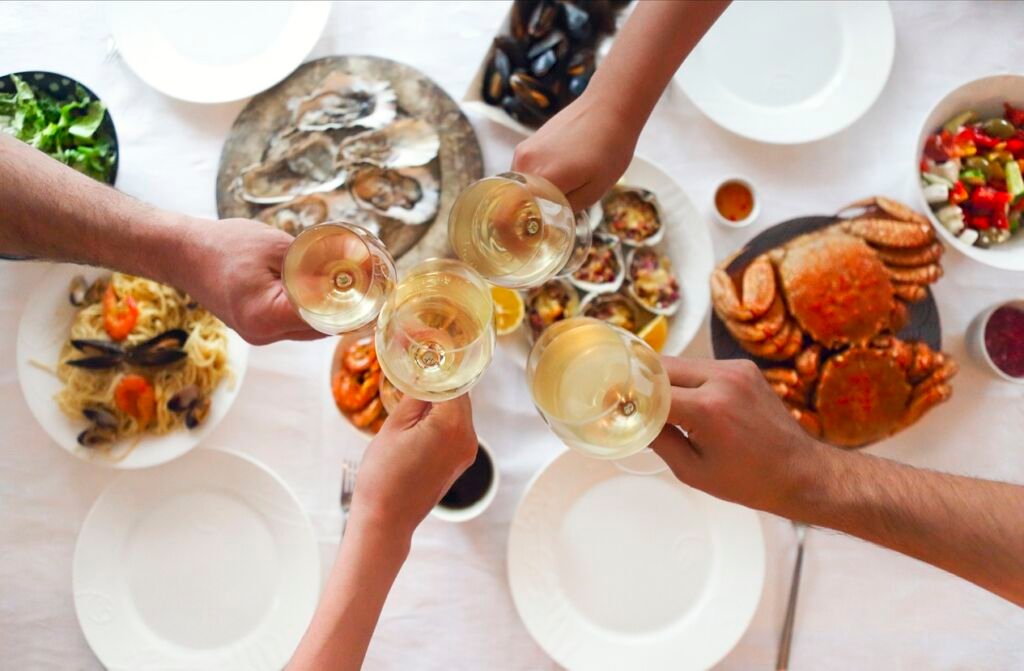
The Best Time To Camp At Bribie Island: Weather, Wildlife & Events
Maybe you’re looking for some hot weather, or the best times to spot migrating whales or birds – so here are the best times to go camping at Bribie Island based on what you and other travelers look for.
1. Weather
February is on average the wettest time of year for Bribie Island. But because its summer, December, January and February all bear an average of 86 degrees (30 degrees Celsius). There’s also nothing quite like an Australian Christmas by the beach!
During peak holiday periods like spring and summer break, it’s busy but less wet on average. Temperatures are more palatable – for those who don’t like heat – at around 68 degrees (20 degrees Celsius).

2. Wildlife
For animal enthusiasts, a must-see is The Great Migration at Moreton Bay, where whales migrate en masse every June through to October. There are many boats you can catch that will take you around the bay specially to see them. Or you can hire your own boat if you can sail! Or simply, you can spot them from the shore. Regardless this is a wondeful time to go camping at Bribie Island.
The dugong, or the sea cow, can be spotted feeding on seagrass in the Moreton Bay Marine Park year-round. It is a gentle creature which is also under threat, so be careful around them.
There are hundreds of bird species that can be spotted on the island throughout the year, including migratory birds in the spring. The best place to birdwatch is Buckley’s Hole in the southern part of the island.
Mammals can be spotted year-round like the kangaroo, wallaby, dingo, and emu. The best time of day to see them is at dawn or dusk. You’ll find lots of fish in the shallow reefs of Bribie Island year-round too.
Turtles can be spotted nesting from the southern tip to the northern tip of the island, and from October to April, they look for food, breed, and lay their eggs on the sand.
Dolphins can be spotted year-round, and they love to chase boats! It’s easy to see them from the shore or in the waters of Pumicestone Passage.
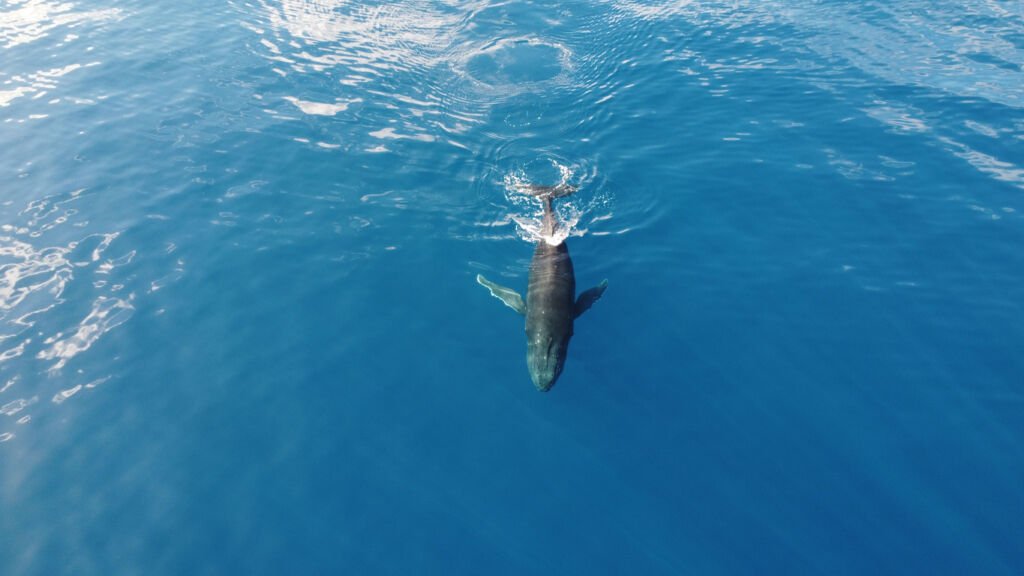
3. Events
Many events take place on Bribie Island throughout the year which may encourage you to visit as they take place:
- Sandstone Point Hotel hosts many outdoor concerts and music tours throughout the year, especially during the summer. If you like festivals, such as the THIS THAT festival, visiting around Christmas would be perfect for you! And speaking of festivities, Sandstone Point Hotel hosts yearly Halloween parties for adults and Christmas carnivals for the whole family. Check out the hotel’s current events here.
- On the last Sunday of every month, Banksia Beach hosts the Bribie Island Arts and Crafts Fair, so time your trip well if you love handmade products!
- If you prefer to craft yourself rather than just buy crafts, the Bribie Island Arts Centre hosts many workshops throughout the year. From mosaics to acrylic pours, there’s something for every art lover. Check out upcoming events here.
- On the second Sunday of each month, the Bribie Island and District Community Chest Market takes place on Toorbul Street, where you will find products from local artists, fresh fruit and veg, plants, soaps, clothes, fishing items and street food.
- The Bribie Island Rotary Markets take place in Brennan Park, every second Sunday of each month. Here you can find over 80 stalls selling fresh food, clothes, crafts, gifts, and street food. There’s also a jumping castle for the kids.
- The Abbey Medieval Festival takes place for a whole weekend every July in Caboolture, just next to the island. This festival celebrates all things medieval, with re-enacted jousting tournaments, archery, and music. There’s also an abundance of historical displays and workshops, as well as opportunities to learn about medieval farming and cooking. You will find markets here too.


